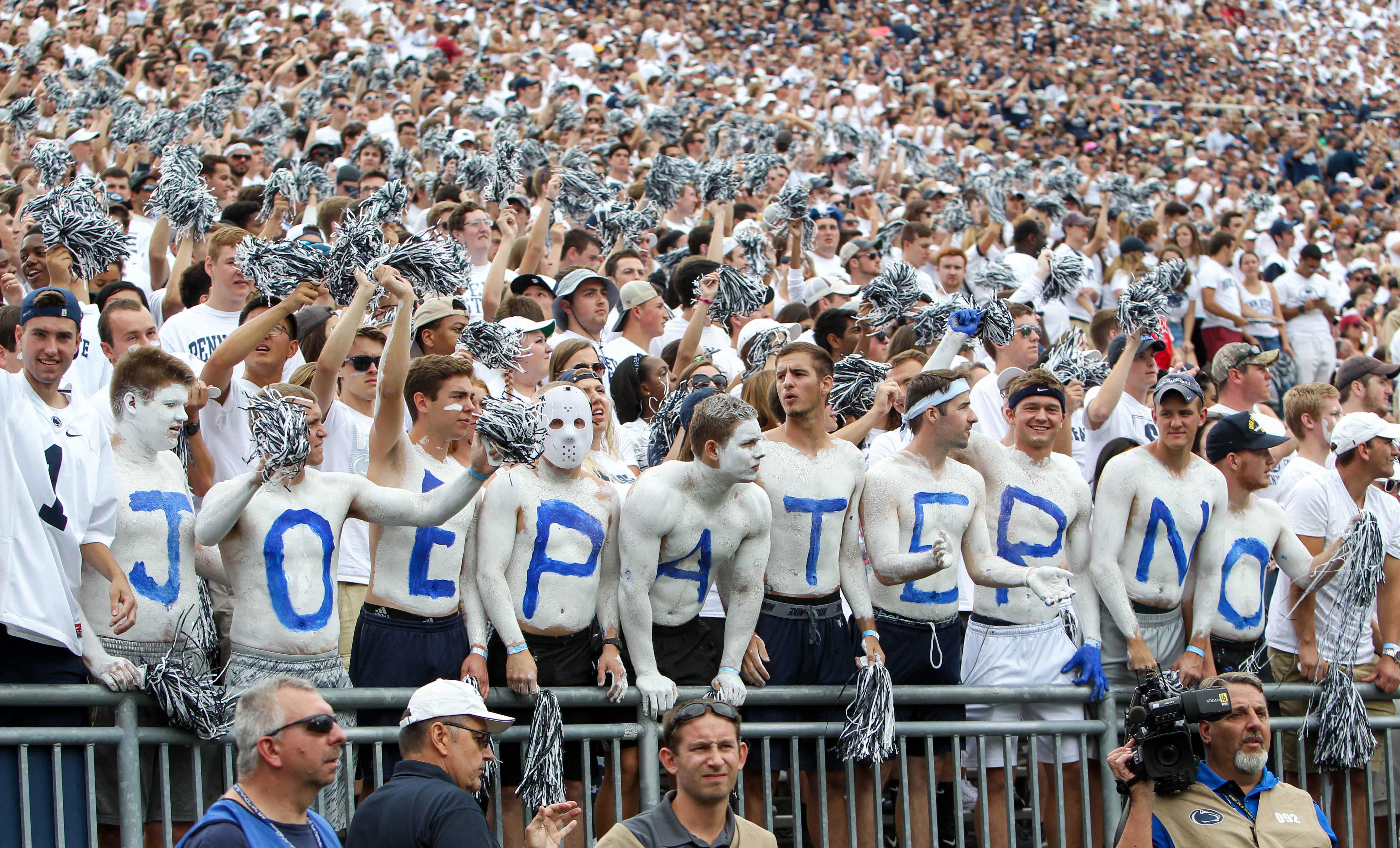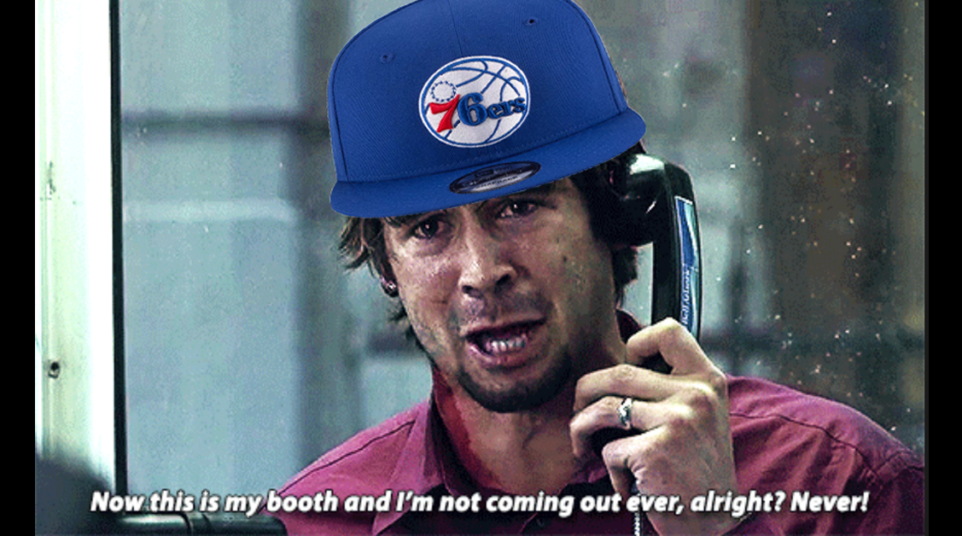
Joe Paterno Was Just a Creature of College Football's Toxic Culture
The latest Joe Paterno story slipped into the news cycle two Saturdays ago, nestling itself between the ongoing revelry of a new college football season and the impending calamity of Hurricane Irma.
Given the distractions that presented themselves that weekend, you would be forgiven if you missed it, or, more likely, quickly digested the lede before moving on to the next article.
After all, the Penn State scandal is yesterday’s news. Jerry Sandusky is in prison. Two former PSU administrators and the school’s ex-president received jail sentences for their roles in the cover-up. Paterno is dead, his legacy in tatters outside the Happy Valley bubble. The university has paid millions of dollars in settlements to Sandusky victims.
There are fresh tragedies for the public to consume. Frankly, some of us have even become so inured to atrocity that we’ve lost our capacity for outrage.
However, the primary revelation contained within Sara Ganim’s recent CNN offering should require us all to read past the headline and pause – not for anger – but for introspection.
According to the article, Paterno may have known about his troubled former defensive coordinator’s predatory behavior before assistant Mike McQueary presented the head coach with his eyewitness account of the now-infamous shower incident.
Ganim reports:
McQueary, a one-time Penn State football assistant who became the star witness in the case against Sandusky, told state police in 2011 that he’d visited Paterno on a Saturday morning 10 years earlier to tell him that the previous evening he had witnessed “an extreme sexual act occurring between Sandusky and a young boy” in a football locker room shower, according to the report by Pennsylvania police.
“Paterno, upon hearing the news, sat back in his chair with a dejected look on his face,” the report states, adding that McQueary “said Paterno’s eyes appeared to well up with tears.”
“Then he made the comment to McQueary this was the second complaint of this nature he had received about Sandusky,” the report states, citing McQueary’s recollection.
Ganim is not some hack journalist or purveyor of fake news, to borrow the phrase of the moment. Her dogged investigation of the Sandusky affair while covering the crime beat for Harrisburg’s Patriot-News earned her a 2012 Pulitzer Prize for local reporting. She’s done the work and cultivated the sources. While we should always reserve skepticism for stories that rely on anonymous whisperers with unknown motives, we cannot simply dismiss Ganim in the fashion of the day.
The twin questions of what Joe Paterno knew and when he knew it, with respect to Sandusky, have stoked fierce debate between the legendary coach’s detractors and disciples. Recent media dispatches have painted the portrait of a man long cognizant of Sandusky’s behavior and indifferent to the damage inflicted on his victims. Yet, this picture may be distorted, for the artist behind it is the insurance company currently responsible for paying Sandusky’s victims on behalf of Penn State.
What remains outside the realm of serious dispute is the fact that Paterno did not do enough to stop Sandusky.
Paterno even admitted as much in an interview with The Washington Post conducted shortly before his death.
“In hindsight,” he confessed, “I wish I had done more.”
The Freeh Report spelled out Paterno’s failure in more unforgiving terms. While analyzing Penn State’s response to McQueary’s account, the authors of the investigation affirmed: “At no time did (Graham) Spanier, (Gary) Schultz, Paterno or (Tim) Curley try to identify the child in the shower or whether the child had suffered harm.”
It remains a damning finding, one that could not be definitively disproven by the Paterno family in a review of the Freeh Report prepared on their behalf by former Pennsylvania governor Dick Thornburgh.
“The assertion that Mr. Paterno lacked empathy for children and/or victims of child abuse,” Thornburgh wrote, “is contradicted by his long history of charitable work and dedication to the development of young men.” In a lawyerly sleight of hand, Thornburgh then delineated the various philanthropic endeavors to which Paterno contributed during his life. Not once did Thornburgh directly refute the accusation that, in the specific case of the child in the shower, Paterno neglected to provide sufficient help to the victim.
But why? Why seemingly place the welfare of a football program ahead of the needs of Sandusky’s victims?
Perhaps Paterno truly did not grasp the severity of the allegations leveled against his former underling. Perhaps he did not want to know. Perhaps he thought Jerry’s “indiscretions” would be sufficiently treated with professional help from a psychologist. Perhaps Paterno reasoned that an extended legal inquiry would do more harm than good, irreparably hurting the victim and causing the Sandusky family incredible shame. Perhaps he was worried about the damage the resulting publicity would inflict on his own reputation. Perhaps he was concerned that the football empire he created would crumble, destroying the program he essentially built from scratch.
Perhaps he agonized over the impact to the local economy that a disruption of the football operation would cause. Perhaps he took into consideration his increasingly tenuous standing among boosters and trustees, who in 2001 were growing frustrated by the multi-season slump the football team was struggling to escape. Perhaps he wondered if the players in his program could handle the distraction of the Sandusky story going public. Perhaps he preferred to manage the situation rather than resolve it, lest it become a scandal that might imperil the university he loved.
Perhaps he pondered some combination of these things. Perhaps he accounted for none of these things. Perhaps Paterno opted for the path of least resistance because he felt empowered to do so.
Paterno was “Holy Joe,” an ethos so ingrained in the marrow of Happy Valley that a campus mural includes his likeness with a halo above his head. It was removed by artist Michael Pilato in 2012, then re-painted on the wall last year after a change of heart.
In a collegiate sports landscape that was increasingly becoming big business, Paterno supposedly embodied the principles that once served as the foundation of amateur athletics. In a profession of mercenaries, Paterno was the loyal soldier. He wasn’t in constant search of the next opportunity and corresponding pay day. Instead, he stayed on campus. He donated substantial portions of his wealth to Penn State. He fancied himself more than a football coach. He was a teacher and a molder of men.
He made it okay for all of us to continue watching college football. He was the antidote to the cognitive dissonance with which we would have otherwise wrestled as we watched the Rose Bowl Game presented by Vizio, in association with Citi Bank, MasterCard, Coca Cola, and Home Depot, on whatever network won the bidding war to televise the contest. As the influence of money shaped and contorted the destinies of players providing free labor, Paterno remained the proverbial stick in the mud. And the media lionized him for it.
They marveled at his longevity. He was applauded for graduating his players and running a clean operation. “Success with Honor” and “The Penn State Way” were the stamps the program used to brand their traditional approach.
They were different. They were better.
The program was about more than wins, current Penn State athletic director and apparent revisionist historian Sandy Barbour informed the world when the NCAA restored the 409 victories it originally vacated from Paterno’s ledger.
How many more losses to schools like Toledo would the Penn State faithful have tolerated before shoving their iconic coach into retirement? The buzzards were circling in 2003, until Joe Pa orchestrated a magical turnaround that culminated with an 11-1 record and Orange Bowl victory just two years later.
It was always about the wins. Even though their sanctimonious packaging has been severely damaged, it will always be about the wins.
Ultimately, we can continue to take a sledgehammer to the pristine image Paterno tried to preserve for himself and his program. He may well deserve such treatment. However, we should save some energy for the deconstruction of the larger culture of reverence in sports, of which Paterno was but a creature.
Paterno did not put himself on a pedestal.
We did it.
We deified him for behaving the way college coaches should conduct themselves. He may have reveled in the cult of personality that enveloped him, but he did not create it. We did.
Paterno may have swept Sandusky’s crimes under the rug, but we handed him the broom. So, as we bury Joe Paterno for enabling Jerry Sandusky, let’s not forget who enabled Paterno.
https://www.youtube.com/watch?v=l5sud3fVGZU





